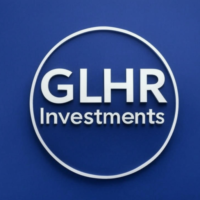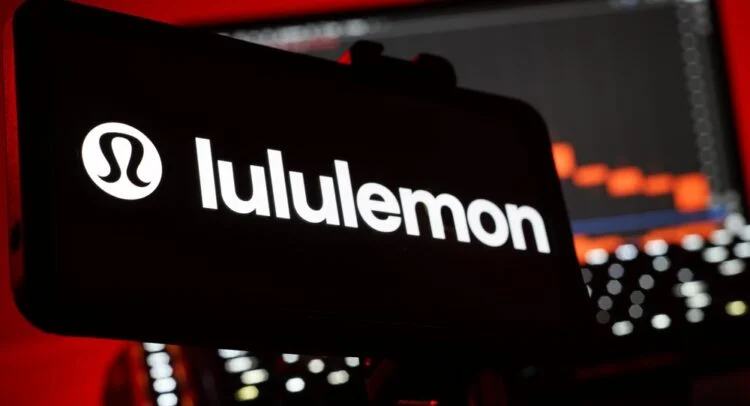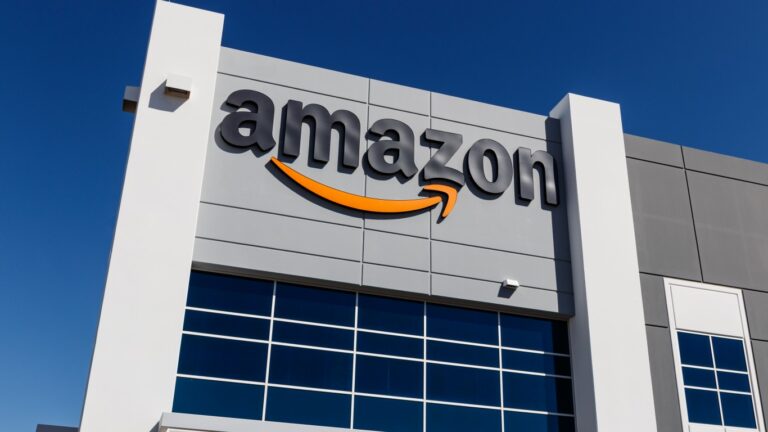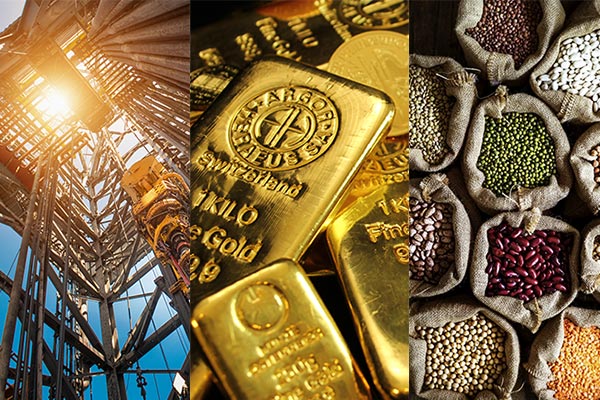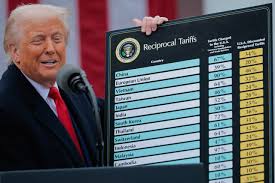
At GLHR Investing, we’re dissecting the impact of President Trump’s 2025 tariffs on the steel, technology, and consumer goods sectors to uncover investment opportunities in a volatile economy. With the S&P 500 (SPY) down 4.8% year-to-date at $513.88 as of May 23, 2025, and inflation spiking to 3.2% CPI in June, tariffs are reshaping markets. Can stocks like Nucor (P/E 11, 15% EPS growth) or ETFs like the Industrial Select Sector SPDR Fund (XLI) deliver profits amid trade wars? Here’s a comprehensive analysis of tariff impacts, top investment picks, and risks like inflation surges, with strategies to thrive in 2025’s global tensions.
- 2025 Economic and Tariff Context:
- Market Overview:
- SPY fell 15.6% YTD, with a 0.87% May drop and 0.5–1% decline in June’s first week (June 1–6), nearing bear market territory (17.6% from February’s $613.23 peak), per prior analyses and X post (@kautiousCo).
- Volatility spiked (VIX ~20.6), with the Fear & Greed Index at ~45 (neutral), reflecting trade uncertainty, per web data.
- Economic Indicators:
- Q1 GDP contracted -0.3%, with Q2 estimated at 1.5–1.9%, below 2024’s 2.7%, driven by tariffs and 13% retail spending cuts, per web data.
- Inflation rose to 3.2% CPI in June 2025 (from 3% in March), with expectations of 6.7%, fueled by 50% steel tariffs, adding $1,200/household in costs, per web data.
- Unemployment hit 4.2% (April), with job growth at ~100,000/month, slowed by federal layoffs and immigration curbs (~500,000 net), per web data.
- Trump’s Tariff Policies:
- April 8 Tariffs: 125% on China, 25% on Canada/Mexico, paused until July 9, caused a $5T S&P 500 loss by April 30, per web data.
- Steel Tariffs: Reinstated 25% on all steel imports (March 12), doubled to 50% from June 4 under Section 232, reducing imports by 18–22%, per web data.
- Trade Developments: U.S.-China tariff rollback (May 12, to 10% for 90 days), EU tariff delay (July 9), and China’s mineral export ban (May 30) escalated tensions, per web data. Talks scheduled for June 9 in London may ease or worsen disputes, per web data.
- Macro Impacts:
- Tariffs raised effective rates to 15.4%, the highest since 1938, projecting a 2.8% GDP contraction and $11.2B tax increase on steel/aluminum imports, per web data.
- Retaliatory measures (e.g., Canada’s 35% tariffs, EU’s $4B duties) risk global trade disruptions, per web data.
- Market Overview:
- Tariff Impacts by Sector:
- Steel Industry:
- Positive Effects:
- 50% tariffs reduced import competition by 18–22%, boosting domestic pricing power, with hot-rolled coil (HRC) prices reaching $890/ton by June 9 (up 33.3% since July 2024), per web data.
- Nucor and Cleveland-Cliffs reported robust order books, with 10–12 week lead times and a 14% YOY automotive demand surge (16.2M units SAAR), per web data.
- Domestic capacity utilization rose to 78.2%, supporting production without immediate constraints, per web data.
- Negative Effects:
- Higher raw material costs (scrap at $425/ton, down from $485/ton) and energy inflation pressured margins, per web data.
- Downstream industries (e.g., construction, auto) face 19% steel cost increases, potentially raising vehicle prices by $6,250, per web data.
- Market Reaction: Steel stocks surged (Nucor +8.3%, Steel Dynamics +6.7% on February 10), with Nucor’s pricing strategy (nine hikes, then cuts in May) reflecting tariff-driven volatility, per web data.
- Positive Effects:
- Technology Sector:
- Negative Effects:
- 125% China tariffs (paused) and mineral bans (May 30) raised tech supply chain costs 5–10%, impacting semiconductors and hardware, per web data.
- Companies like Apple (AAPL) and NVIDIA (NVDA) faced ~2–3% stock drops post-May 30 ban, with potential $10B in added costs if tariffs resume, per web data and X post (@ppt7sctv).
- Global supply chain shifts (e.g., Apple to Vietnam/India) increase costs, with PMI indices dipping below 50, signaling contraction, per web data.
- Positive Effects:
- Domestic tech firms with diversified supply chains (e.g., 3M) gained resilience, per web data.
- OBBBA’s corporate tax cuts (100% expensing) supported R&D, benefiting AI-driven tech, per prior analyses.
- Market Reaction: Tech-heavy Nasdaq fell ~0.8–1.2% in June’s first week, underperforming SPY, per prior analyses.
- Negative Effects:
- Consumer Goods Sector:
- Negative Effects:
- Tariffs raised input costs 8–12% for appliances (e.g., Whirlpool, GE) and 5–7% for industrial equipment, squeezing margins, per web data.
- Consumer prices rose (e.g., 2.3% goods price hike), with $1,200/household cost increases, reducing spending (down 13%), per web data.
- Retailers like Walmart and Target faced inventory cost pressures, with consumer discretionary (XLY) down ~1.5% YTD, per prior analyses.
- Positive Effects:
- OBBBA tax cuts ($1,700/family) boosted spending by 0.3–0.5%, supporting defensive retailers (e.g., Walmart), per web data.
- Domestic-focused firms (e.g., Procter & Gamble) mitigated tariff impacts, per web data.
- Market Reaction: Defensive consumer staples (SPLRCS) up ~1–2% YTD, outperforming cyclicals, per web data.
- Negative Effects:
- Steel Industry:
- Investment Picks:
- Nucor Corporation (NUE):
- Price: ~$160, Yield: 1.3%, YTD: Down 28%, per web data.
- P/E: 11 (forward P/E ~10), reflecting undervaluation, per web data.
- EPS Growth: 15% projected for 2025, driven by tariff-protected pricing, per web data.
- Why Pick: Nucor’s vertically integrated supply chain and 78.2% capacity utilization capitalize on 50% tariffs, with HRC prices up 33.3% since July 2024, per web data. Q1 2025 net sales rose 11% to $7.83B despite an 81% earnings drop YOY, showing resilience, per web data.
- Action: Buy on dips near $150, targeting $180–$200 (12–25% upside), per web data.
- Industrial Select Sector SPDR Fund (XLI):
- Price: ~$120, Yield: 1.5%, YTD: Up ~5%, per web data.
- Why Pick: Tracks industrial firms (e.g., aerospace, machinery) benefiting from tariff-driven domestic production, with top holdings like Boeing and Caterpillar, per web data. Outperformed SPY by ~3% YTD, per web data.
- Action: Buy on dips near $115, targeting $130–$140 (8–17% upside), per web data.
- Other Picks:
- Steel Dynamics (STLD): ~$130, 1.4% yield, up 11% YTD, P/E ~10, buy near $120 for $150 target, per web data.
- Cleveland-Cliffs (CLF): ~$15, 0% yield, up ~26% on tariffs, P/E ~12, buy near $14 for $18–$20 target, per web data.
- Procter & Gamble (PG): ~$165, 2.4% yield, up ~5% YTD, P/E ~24, buy near $160 for defensive consumer exposure, per web data.
- Nucor Corporation (NUE):
- Risks:
- Inflation Spikes:
- June 2025 CPI at 3.2%, projected to hit 4–4.5% by year-end due to tariffs, could delay Fed rate cuts (4.25–4.5%), per web data.
- Higher costs (e.g., 19% steel, 8–12% appliances) may erode consumer demand, hitting tech and consumer goods, per web data.
- Retaliatory Tariffs:
- Canada’s 35% tariffs, EU’s $4B duties, and Japan’s rare earth controls risk $12B in trade disruptions, impacting tech supply chains, per web data.
- Demand Destruction:
- High steel prices ($890/ton) could reduce automotive and construction demand (auto production -8% YOY Q1), per web data.
- Global Economic Slowdown:
- A 60% U.S. recession risk and China’s slowing construction (4.5% GDP growth) may dampen steel and tech demand, per web data.
- Policy Uncertainty:
- WTO challenges or post-2024 election trade shifts could moderate tariffs, capping steel price gains, per web data.
- Inflation Spikes:
- Investor Strategy:
- Portfolio Allocation:
- Allocate 10–15% to steel (NUE, STLD, CLF) and industrials (XLI) for tariff-driven upside, 40% to defensives (PG, WMT) for stability, and 30% to bonds (Treasuries), per web data.
- Hedge with 3–5% in gold (GLD, +3%) or utilities (XLU, +1%) to counter inflation and volatility, per web data.
- Timing:
- Buy on SPY dips near $490–$500 or steel stock pullbacks (e.g., NUE <$150), per Trade That Swing.
- Dollar-cost average ($500–$1,000/month) to manage VIX (~20–25), per Schwab.
- Key Catalysts to Monitor:
- July 9 Tariff Deadline: Reinstatement could boost steel but hit tech/consumer goods, per web data.
- June 9 U.S.-China Talks: Resolutions could ease tech supply chain costs, per web data.
- June 17–18 FOMC Meeting: Rate cut signals (25 bps in September) could support markets, per X post (@grok).
- Q2 Earnings (July): Confirm steel (NUE) and industrial (XLI) growth, per web data.
- Inflation Data: June CPI (3.2%) and future spikes could alter Fed policy, per web data.
- Conclusion:
- Trump’s 2025 tariffs have created winners (steel) and losers (tech, consumer goods), with Nucor (P/E 11, 15% EPS growth) and XLI poised to profit from domestic production. Inflation spikes (3.2% CPI), retaliatory tariffs, and recession risks (60%) demand cautious strategies. Investors can seize tariff-driven gains while hedging against volatility.
- Portfolio Allocation:
- Why It Matters: In 2025’s trade-war economy, tariffs reshape markets, boosting steel (Nucor up 8.3% on tariff news) while challenging tech and consumer goods. With SPY down 15.6% YTD and CPI at 3.2%, picks like Nucor and XLI offer upside, but inflation and global risks require vigilance. GLHR Investing guides you to profit from tensions, balancing growth and safety.
Invest smart with GLHR Investing—navigate trade wars, secure your wealth!
Disclaimer: GLHR Investing is not a financial adviser; please consult one.
